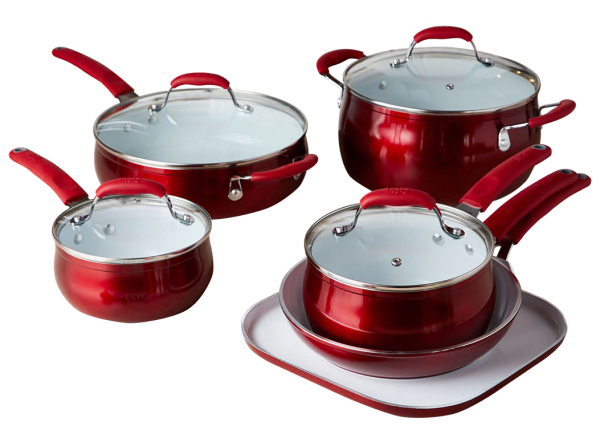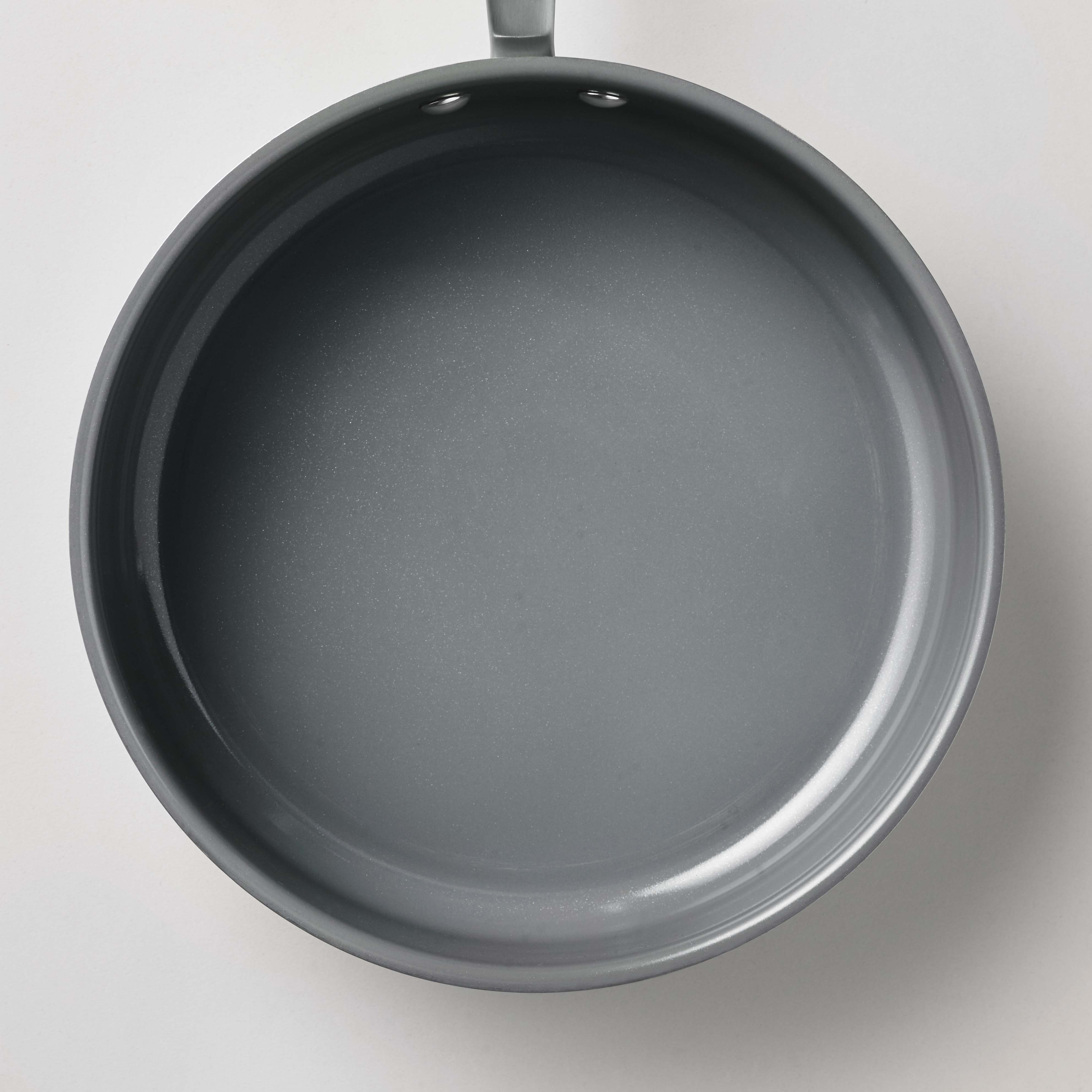Titanium ceramic cookware or titanium reinforced pots and pans this is the most common type of titanium ceramic cookwarethat you find in the shops.
Techtanium titanium reinforced ceramic.
Pfoa free and ptfe free non stick titanium reinforced ceramic coating heavy gauge forged aluminum guarantees optimum heat distribution for fast and even cooking stainless steel induction base is suitable for all cooking surfaces dual riveted stay cool silicone handles and knobs.
The base is coated with a titanium infused ceramic coating.
Non stick titanium reinforced ceramic coating is manufactured without pfoa or ptfe.
The aluminum construction on the cookware set guarantees optimum heat distribution for fast and even cooking.
Please call member.
Heavy gauge forged aluminum guarantees optimum heat distribution for fast and even cooking.
Studies have proven that tib whiskers enhance the 43.
The coating of the cookware is manufactured without pfoa or ptfe providing a titanium reinforced non stick ceramic surface that allows food to slide right out of the pan.
Generally the titanium cookware built by infusing it with the aluminum metal for making it a healthy cookware as this metal and the ceramic do not react with the human body.
Ceramic titanium which is titanium with a ceramic layer on the cooking surface that gives it a glass type finish became a popular cookware item in the 1980s.
The aluminum core conducts heat seven times faster than metals such as steel or iron.
Titanium forms stable tib whiskers when reinforced with boron based reinforcements.
No one tests cookware like we do.
This is technically cookware that has a ceramic coating on it that has been infused with titanium.
Ceramics remain a highly viable option to enhance anti ballistic properties of titanium.
This is a great combination for the following reasons.
Stainless steel induction base is suitable for all cooking surfaces.
Get performance ratings and pricing on the tasty titanium reinforced ceramic nonstick walmart exclusive cookware.
Ceramic reinforced peek abutments may be an alternative to zirconia abutments with a titanium base for single implant restorations in the anterior region.
However there is need for further in vitro and clinical studies to evaluate the long term performance of ceramic reinforced peek abutments.










